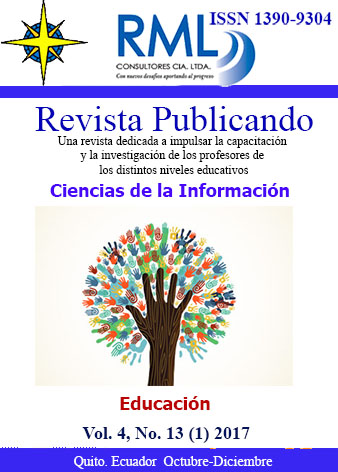Resumen
The importance of folk pedagogy in children upbringing is undeniable, but still it is not used widely. The innovative methods of teaching “The World Around Us” to primary school children, based on the knowledge about nature accumulated by the Tatar people, are presented in this article. The Tatar people have developed their own cognition dialectic of nature and communication with it, their own system of familiarizing the youth with a careful attitude to the environment. It is very important not to lose it. Modern education will benefit of using folk knowledge and traditions. It helps to build national identification of students, to enrich their spiritual life, to form their ecological culture, to form the right attitude to nature. The pedagogical experience, traditions, rites and customs of the Tatar people about nature can be the foundation for the students”™ ecological culture formation at the lessons of “The World Around Us”. Therefore, we propose to use some innovative methods of teaching “The World Around Us” in primary schools.
Referencias
Amy Cutter-Mackenzie & Susan Edwards, 2013. Toward a Model for Early Childhood Environmental Education: Foregrounding, Developing, and Connecting Knowledge Through Play-Based Learning// The Journal of Environmental Education. Volume 44, pp 195-213
Harold R. Hungerford & Trudi L. Volk, 2013. Changing Learner Behavior Through Environmental Education// The Journal of Environmental Education (3), pp 8-21
Khusainov Z.A, Shigapova N.V, Samigullina G.S, Education of ecological culture of school children on the basis of ethnopedagogy//International Business Management. - 2016. - Vol.10, Is.23. - pp. 5612-5615.
Khusainov Z.A. Gaisin R.I., Biktimirov N.M., Valiev M.R., Gilemhanov I.R. Formation of Ecological Culture in the Aspect of Ethno Pedagogy // Mediterranean Journal of Social Sciences. February 2015, MCSER Publishing, Rome-Italy. Vol 6. â„– 1 S3., - pp. 126 -130.
Khusainov Z.A. History of the development of ecological culture of the Tatar people. // Meždunarodnyj nauÄno-issledovatel'skij žurnal (Italiano). Italian Science Review. â„–1 (32). 2015. - pp. 70-71
Matt Ferkany, Allison L. Freed & Sarah Riggs Stapleton, 2014. A Review of “Navigating Environmental Attitudes”// The Journal of Environmental Education Vol. 45 , Iss. 2,
McGuire, N.M., 2015. Environmental Education and Behavioral Change: An Identity-Based Environmental Education Model.// International Journal of Environmental and Science Education, 10(5), pp 695-715.
Mohammad Reza Karamipour and Sajjad Emamvirdi, A Theoretical Framework on Environmental Education in the Primary Schools in Iranian Educational System//The Social Sciences, 2016, 1, pp. 1972-1979.
Nurit Carmi, Sara Arnon, and Nir Orion, 2015.Transforming Environmental Knowledge Into Behavior: The Mediating Role of Environmental Emotions// The Journal Of Environmental Education,Vol. 46, Iss. 3
Ponomarenko, Y.V., Yessaliev, A.A., Kenzhebekova, R.I., Moldabek, K., Larchekova, L.A., Dairbekov, S.S. & Asambaeva , A.L., 2016. Students”™ Environmental Competence Formation as a Pedagogical Problem.// International Journal of Environmental and Science Education, 11(18), pp 11735-11750.
Robottom, I.M., 2014.”˜Why not education for the environment?”™// Australian Journal of Environmental Education, 30(1), pp. 5–7.
Sarah Riggs Stapleton, 2015. Environmental Identity Development Through Social Interactions, Action, and Recognition//The Journal of Environmental Education Vol. 46 , Iss. 2
Wyner, Y., 2013. A conceptual model for teaching the relationship of daily life and human environmental impact to ecological function.// International Journal of Environmental and Science Education, 8(4), pp 561-586.
Z.A. Khusainov, I.T. Gaisin , S.I. Beketova, M.R. Valiev and Z.E. Minnebaeva, Family Upbringing of Children in the Substrate of Folk Ecological Traditions// International Business Management, 2016, 10 pp. 5301-5303.
Usted es libre de:
Compartir — copiar y redistribuir el material en cualquier medio o formato
Adaptar — remezclar, transformar y construir a partir del material
La licenciante no puede revocar estas libertades en tanto usted siga los términos de la licencia
Bajo los siguientes términos:
Atribución — Usted debe dar crédito de manera adecuada, brindar un enlace a la licencia, e indicar si se han realizado cambios. Puede hacerlo en cualquier forma razonable, pero no de forma tal que sugiera que usted o su uso tienen el apoyo de la licenciante.
NoComercial — Usted no puede hacer uso del material con propósitos comerciales.
CompartirIgual — Si remezcla, transforma o crea a partir del material, debe distribuir su contribución bajo la lamisma licencia del original.
